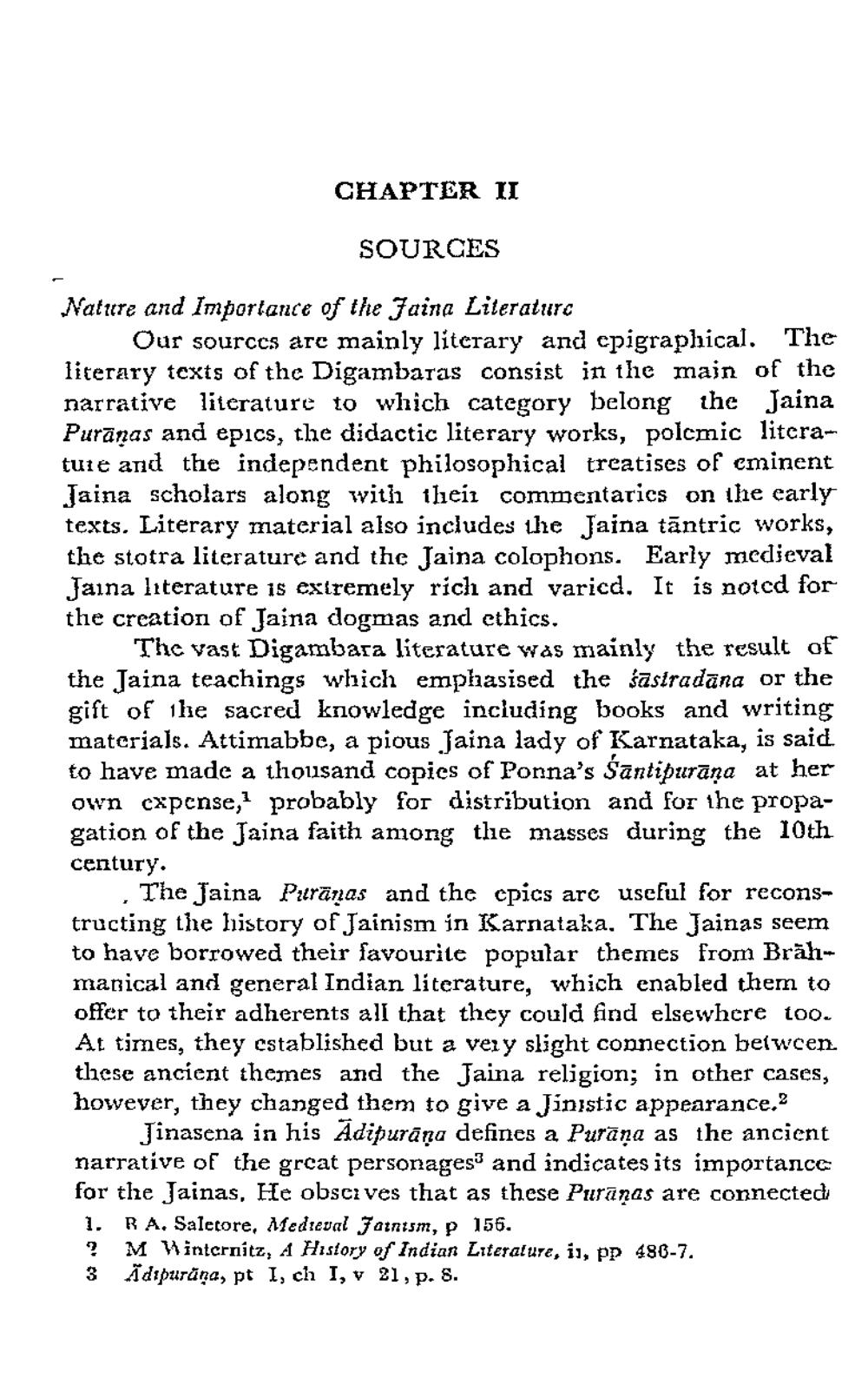________________
CHAPTER II
SOURCES
Nature and Importance of the Jaina Literature
Our sources are mainly literary and epigraphical. The literary texts of the Digambaras consist in the main of the narrative literature to which category belong the Jaina Puranas and epics, the didactic literary works, polemic literature and the independent philosophical treatises of eminent Jaina scholars along with thei commentaries on the early texts. Literary material also includes the Jaina tantric works, the stotra literature and the Jaina colophons. Early medieval Jaina literature is extremely rich and varied. It is noted for the creation of Jaina dogmas and ethics.
The vast Digambara literature was mainly the result of the Jaina teachings which emphasised the śastradana or the gift of the sacred knowledge including books and writing materials. Attimabbe, a pious Jaina lady of Karnataka, is said. to have made a thousand copies of Ponna's Santipurāṇa at her own expense,1 probably for distribution and for the propagation of the Jaina faith among the masses during the 10th century.
The Jaina Purānas and the epics are useful for reconstructing the history of Jainism in Karnataka. The Jainas seem to have borrowed their favourite popular themes from Brāhmanical and general Indian literature, which enabled them to offer to their adherents all that they could find elsewhere too. At times, they established but a very slight connection between. these ancient themes and the Jaina religion; in other cases, however, they changed them to give a Jinistic appearance.2 Jinasena in his Adipurāna defines a Purana as the ancient narrative of the great personages and indicates its importance for the Jainas, He obscives that as these Purāņas are connected 1. R A. Saletore, Medieval Jainism, p 156.
?
3
M Winternitz, A History of Indian Literature, i1, pp 486-7. Adipuraṇa, pt I, ch I, v 21, p. 8.




